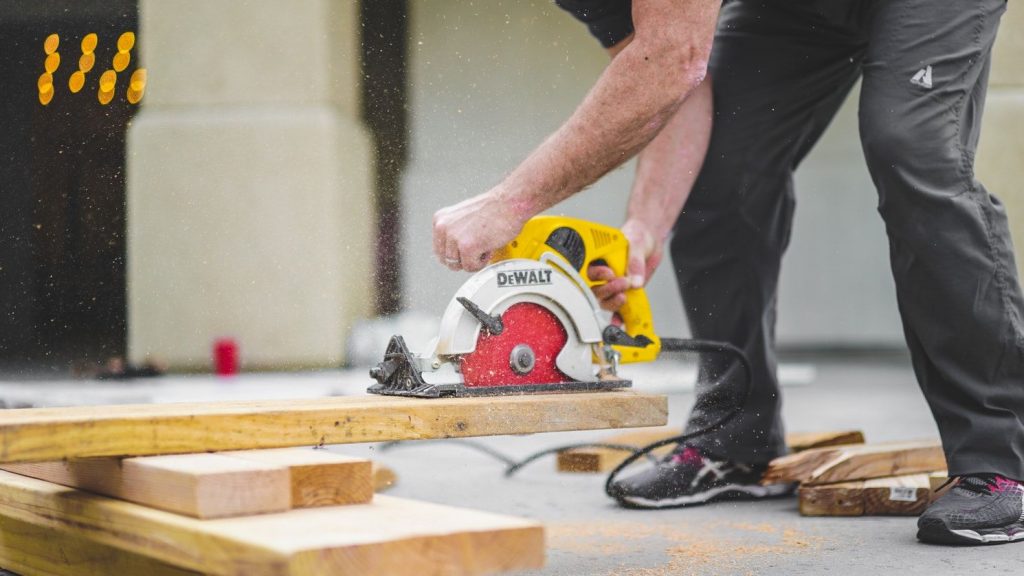The HSE has announced that it is now visiting sites across the UK to assess how they are controlling dust.
Inspectors will be focusing their attention on the construction, woodworking and food manufacturing sectors in particular, where occupational lung diseases, including in some cases occupational cancers, are more common.

The aim of the visits is to assess the measures businesses have in place to protect the health of workers who are exposed to dust.
Inspectors will be making sure that employers:
- Understand the risks related to dust exposure;
- Plan work appropriately; and
- Use the right controls.
Dust is a far-reaching problem, and with the HSE’s intervention programme underway, it’s essential that employers are able to demonstrate compliance to avoid enforcement action. But what are the risks, and what can be done? We explore below.
What is dust and where does it come from?
A number of work activities can create dust – tiny, dry particles in the air. If your working practices involve cutting, drilling, demolishing, sanding or shoveling materials, then you will need to take steps to control the risks to workers’ health.
What are the potential effects on health?
While these fine particles may appear relatively harmless, inhaling dust can have a number of adverse health implications. The effect of dust exposure on human health depends primarily on the size of the particles that an individual breathes in.
- Exposure to large dust particles can cause irritation to the eyes, throat and skin.
- Dust may also contain microscopic solids or liquid droplets that are small enough to get deep into the lungs. This has the potential to cause serious respiratory and cardiovascular health problems.
The human body has various defence mechanisms to deal with the dust we breathe in; however, in some cases, our bodies can become overwhelmed if dust particles are small enough or inhaled in sufficient numbers.

Are some types of dust more dangerous than others?
Yes, and those particles that cause the most damage are often invisible to the naked eye.
Hazardous types of dust include asbestos, flour, grain, silica (dust from rocks, sand, clay, bricks, concrete, etc.) and wood.
Excessive exposure to these types of dust has been linked to the development of particular health problems. Long-term exposure to flour and wood dust, for example, had been linked to the development of asthma, while asbestos is known to cause a variety of serious and sometimes fatal diseases, including thickening of the lining of the lungs, lung scarring and even lung cancer.
Is there an acceptable level of exposure?
When it comes to controlling dust, there is no all-encompassing safe working limit; the degree of exposure that will be hazardous to health will depend on the dust in question. For some dusts, there are specific Workplace Exposure Limits (WELs) to help employers adequately control exposure.
Silica dust, for example, is particularly hazardous, with a WEL of 0.1mg/m. This means that during an 8-hour period, a worker should not inhale more than around 1/20th the size of a 1p coin.
Dusts that are present in the air at a concentration of 10mg/m3 or more (for inhalable dust) or 4mg/m3 (for respirable dust) are considered hazardous to health. These dusts are subject to the COSHH Regulations.
It is important to note that these concentrations are not workplace limits, exposure limits or safe working limits – they exist solely to determine whether the COSHH Regulations apply.
What are my responsibilities as an employer?
Under the Health and Safety at Work Act etc 1974, employers must ensure that their work activities do not expose workers (or anybody else who may be affected) to unnecessary health and safety risks.
More specific duties relating to protecting workers from exposure to hazardous materials are outlined in the Control of Substances Hazardous to Health (COSHH) 2002 Regulations. These regulations are intended to help employers control risks by providing a framework underpinned by a risk assessment.
NB: There are separate regulations relating to the control of asbestos and working safely with lead.
Remember, the law does not expect all risk to be eliminated but does require that reasonable precautions are taken. Any steps to control exposure to dust should be proportionate to the actual risk to health.
Top tips for controlling workplace dust exposure
1. As a first step, you should carry out a COSHH assessment for each hazardous substance in use to give you a better understanding of employee exposure. As part of the assessment, it is recommended that you engage the services of an occupational hygienist and carry out air sampling in order to check that exposure to dust is below Workplace Exposure Limits and to verify that control measures remain adequate to control any health risk. Where substances are known to cause cancer or asthma, exposure must be controlled to as far below the Workplace Exposure Limit level as is reasonably practicable.
2. Where there is an identified health risk, it is a legal requirement to provide health surveillance. This allows for early detection of ill health so that corrective action can be taken. The degree of surveillance required will depend on the severity of the risk posed. For example:
- For most woods, a low level of health surveillance is sufficient. This involves administering a questionnaire before an employee starts a position in which they will be exposed to wood dust, and then repeating this annually. These questionnaires also provide information on what to do if you suspect than an employee has been affected.
- A higher level of health surveillance, including lung function testing, is needed for exposures to higher-risk wood such as western red cedar, which is a known asthmagen.
3. In terms of dust control generally, it is important to provide Local Exhaust Ventilation (LEV) to extract dust at the source. LEV must be tested every 14 months under the COSHH regulations.
4. Where LEV isn’t reasonably practicable, Respiratory Protective Equipment (RPE) should be provided. It is important to note that RPE users must be face-fit tested to ensure that the RPE remains effective in controlling the risk.
Need support?
The best way to ensure that your business is compliant with all relevant legislation regarding dust control is to seek professional support.
If your business activities generate dust, Ellis Whittam’s Health & Safety specialists can conduct an on-site General Risk Assessment, which includes a section on COSHH, where your consultant will evaluate your current provisions and offer advice and support on effective control strategies. We can also arrange for air sampling and health surveillance to be carried out via our strategic partners.
For hands-on assistance, get in touch on 0345 226 8393.








